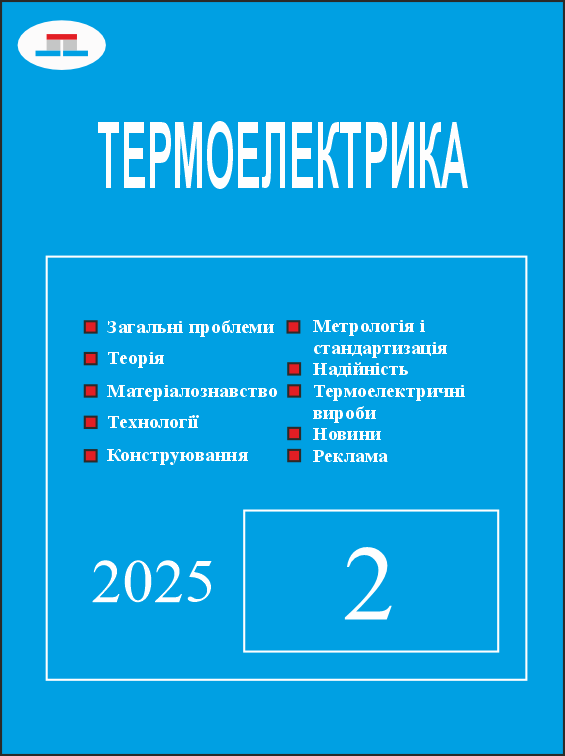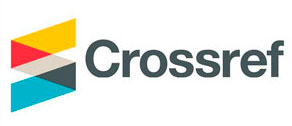Мікрокалориметрія в історичному аспекті, стан та перпективи
Частина 1.
DOI:
https://doi.org/10.63527/1607-8829-2025-2-60-84Ключові слова:
мікрокалориметрія, типи калориметрів, характеристики калориметрів, застосування калориметріїАнотація
У цій статті розглянуто розвиток калориметрії починаючи з ХVIIІ століття. Показано, як змінювалися методики калориметрії у залежності від отримання нових знань про природу тепла і теплових процесів. Відображено вплив промислової революції на розвиток калориметричних методів. Продемонстровані досягнення мікрокалориметрії у ХХ столітті та на даному етапі. Показані основні прикладні напрямки практичного використання мікрокалориметрів. Зроблено прогноз можливих перспективних здобутків в області мікрокалориметрії і аналіз шляхів їх досягнення.
Посилання
1. Lavoisier, A. L., & De Laplace, P. S. (1780). Memoire sur le chaleur. Memoires de l’Académie des Sciences, 355–408. https://catalog.library.vanderbilt.edu/discovery/fulldisplay/alma991015206499703276/01VAN_INST:vanui
2. Quoi de neuf depuis la calorimétrie de Lavoisier et de Berthelot? (2019). L’ACTUALITÉ CHIMIQUE, 441, Juin. https://new.societechimiquedefrance.fr/numero/quoi-de-neuf-depuis-la-calorimetrie-de-lavoisier-et-de-berthelot-p15-n441/
3. Joule, J. P. (1843). On the calorific effects of magnetic electricity and on the mechanical value of heat. Philosophical Magazine, 23, 263–276, 347–355, 435–443. https://www.abebooks.fr/calorific-effects-magneto-electricity-mechanical-value-heat/31374983144/bd
4. Berthelot, M. (1879). Essai de mécanique chimique fondée sur la Thermochimie, I. Calorimetrie. Dunod. https://gallica.bnf.fr/ark:/12148/bpt6k903010.texteImage
5. Médard, L., & Tachoire, H. (1994). Histoire de la Thermochimie. Publications de l’Université de Provence, pp. 209–211. https://doi.org/10.1006/jcht.1995.0110
6. Świętosławski, W. (1946). Microcalorimetry. Reinhold Publishing Corporation, p. 199. https://www.google.com.ua/books/edition/Microcalorimetry/r8ggAAAAMAAJ?hl=uk&gbpv=0&bsq=inauthor:%22Wojciech%20%C5%9Awi%C4%99tos%C5%82awski%22
7. Kawakami, M. (1927). Die Mischungswärme von Metallen. Zeitschrift für anorganische Chemie, 167(1), 345–363. https://doi.org/10.1002/ZAAC.19271670128
8. Kubaschewski, O., & Walter, A. (1939). Ein Adiabatisches Hochtemperaturcalorimeter zur Bestimmung der bei der Legierungsbildung auftretenden Wärmetönungen. Zeitschrift für Elektrochemie, 45(8), 630–636. https://www.periodicos.capes.gov.br/index.php/acervo/buscador.html?task=detalhes&id=W1957172836
9. Boyer, C. B. (1943). History of the measurement of heat I. Thermometry and calorimetry. The Scientific Monthly, 57(5), 442–452. http://www.jstor.org/stable/18161
10. Calvet, E., & Prat, H. (1956). Microcalorimétrie; applications physico-chimiques et biologiques. Masson & Cie. https://odebuplus.univ-poitiers.fr/discovery/fulldisplay?docid=alma991000749359706171&context=L&vid=33UDP_INST:33UDP&lang=fr&search_scope=MyInst_and_CI&adaptor=Local%20Search%20Engine&tab=Everything&query=sub,exact,%20Calorimetry%20,AND&mode=advanced&offset=0
11. Calvet, E., & Prat, H. (1963). Recent progress in microcalorimetry (H. A. Skinner, Ed.). The MacMillan Co. https://shop.elsevier.com/books/recent-progress-in-microcalorimetry/calvet/978-0-08-010032-6
12. Kleppa, O. J. (1955). A thermodynamic study of liquid metallic solutions. VI. Calorimetric investigations of the systems Bismuth-Lead, Cadmium-Lead, Cadmium-Tin, and Tin-Zinc. Journal of Physical Chemistry, 59, 175–181. https://pubs.acs.org/doi/10.1021/j150524a020
13. Ticknor, L. B., & Bever, M. B. (1952). Heats of solution of group IB metals in liquid tin. JOM, 4(9), 941–945. https://doi.org/10.1007/bf03397751
14. Kleppa, O. J. (1955). A thermodynamic study of liquid metallic solutions. VI. Calorimetric investigations of the systems Bismuth-Lead, Cadmium-Lead, Cadmium-Tin, and Tin-Zinc. Journal of Physical Chemistry, 59, 175–181. https://pubs.acs.org/doi/10.1021/j150526a018#citeThis
15. Darby, J. B., Jr., Kleb, R., & Kleppa, O. J. (1966). Twin liquid metal solution calorimeter. Review of Scientific Instruments, 37(2), 164–167. https://doi.org/10.1063/1.1720119
16. Wadsö, L. (1968). Design and testing of a microreaction calorimeter. Acta Chemica Scandinavica, 22, 927–937. https://doi.org/10.3891/acta.chem.scand.22-0927
17. Suurkuusk, J., & Wadsö, L. (1974). Design and testing of an improved precise drop calorimeter for the measurement of heat capacity of small samples. Journal of Chemical Thermodynamics, 6(7), 667–679. https://doi.org/10.1016/0021-9614(74)90117-7
18. Anatychuk, L. I., & Luste, O. Y. (1978). Limiting potentialities of microcalorimeters. Journal of Engineering Physics, 35, 1178–1186. https://doi.org/10.1007/BF00860381
19. Anatychuk, L. I., Demchuk, B. M., & Luste, O. J. (2003). Particularly sensitive thermoelectric microcalorimeters with eddy thermoelements. Proceedings of the 22nd International Conference on Thermoelectrics (ICT'03), IEEE, 652–654. https://doi.org/10.1109/ICT.2003.1287436
20. Wadsö, I. (1984). Microcalorimetry. In Ribeiro da Silva, M. A. V. (Ed.), Thermochemistry and Its Applications to Chemical and Biochemical Systems
21. Kleppa, O. J. (2001). Evolution and application of high-temperature reaction calorimetry at the University of Chicago from 1952 to 2000. Journal of Alloys and Compounds, 321, 153–163. https://doi.org/10.1016/S0925-8388(01)00964-1
22. Thorén, S. A., Suurkuusk, J., & Holma, B. (1989). Operation of a multichannel microcalorimetry system in the micro-submicrowatt region: Some methodological aspects. Journal of Biochemical and Biophysical Methods, 18(2), 149–156. https://doi.org/10.1016/0165-022X(89)90076-6
23. Cacciamani, G., Borzone, G., & Ferro, R. (1995). On a simple, high-temperature direct reaction calorimeter. Journal of Alloys and Compounds, 220, 106–110. https://doi.org/10.1016/0925-8388(94)06024-X
24. Wadsö, I., & Goldberg, R. N. (2001). Standards in isothermal microcalorimetry. Pure and Applied Chemistry, 73(10), 1625–1639. https://doi.org/10.1351/pac200173101625
25. Ladbury, J., & Doyle, M. (Eds.). (2004). Biocalorimetry II: Applications of calorimetry in the study of biological systems. John Wiley & Sons. https://doi.org/10.1002/0470011122
26. Lindeman, M. (2000). Microcalorimetry and the transition-edge sensor. University of California, Davis. https://books.google.com.ua/books/about/Microcalorimetry_and_the_Transition_edge.html?id=Tv1jbqar4oQC&redir_esc=y
27. Phipps, M., & Mackin, L. (2000). Application of isothermal microcalorimetry in solid-state drug development. Pharmaceutical Science & Technology Today, 3(1), 9–17. https://doi.org/10.1016/S1461-5347(99)00227-8
28. Woo-Gwang Jung, & Mira Yoo. (2003). Kleppa type calorimeter for the study of high-temperature processes. Journal of Chemical Thermodynamics, 35(12), 2011–2020. https://doi.org/10.1016/j.jct.2003.08.001
29. Lindeman, M., Bandler, S., Brekosky, R., Chervenak, J., Figueroa-Feliciano, E., Finkbeiner, F., Li, M., & Kilbourne, C. (2004). Impedance measurements and modeling of a transition-edge-sensor calorimeter. Review of Scientific Instruments, 75, 1283–1289. https://doi.org/10.1063/1.1711144
30. Bastos, M. (Ed.). (2016). Biocalorimetry: Foundations and contemporary approaches. Taylor & Francis Group, LLC.
31. Schick, C., & Androsch, R. (2018). Chapter 2 - Fast scanning chip calorimetry. In Handbook of Thermal Analysis and Calorimetry, Volume 6 (pp. 47–102). https://doi.org/10.1016/B978-0-444-64062-8.00018-8
32. Llewellyn, P., Grillet, Y., & Rouquerol, J. (1994). Effect of T(III) zoning in MFI-type zeolites on the adsorption isotherm and differential enthalpies of adsorption at 77 K. Langmuir, 10. https://doi.org/10.1021/la00014a038
33. Giordano, F., Denoyel, R., & Rouquerol, J. (1993). Influence of porosity on the adsorption of a non-ionic surfactant on silica. Colloids and Surfaces A: Physicochemical and Engineering Aspects, 71, 293–298. https://doi.org/10.1016/0927-7757(93)80044-F
34. The ATLAS Detector. https://atlas.cern/Discover/Detector
35. Höhne, G. W. H., Hemminger, W. F., & Flammersheim, H.-J. (2003). Differential scanning calorimetry. Springer. https://link.springer.com/book/10.1007/978-3-662-06710-9
36. Médard, L., & Tachoire, H. (1994). Histoire de la Thermochimie. Publications de l’Université de Provence. https://doi.org/10.4000/books.pup.1747
37. Rouquerol, J., Rouquerol, F., Llewellyn, P., & Denoyel, R. (2015). Calorimétrie: Principes, appareils et utilisation. Techniques d'analyse. https://doi.org/10.51257/a-v1-p1202
38. Soritz, S., Sommitsch, A., Irndorfer, S., Brouczek, D., Schwentenwein, M., Priestley, I. J. G., Iosub, A. V., Krieger, J. P., & Gruber-Woelfler, H. (2024). Thermokinetic analyses of metal-sensitive reactions in a ceramic flow calorimeter. Reaction Chemistry & Engineering, 9(7), 1805–1815. https://doi.org/10.1039/D4RE00014E
39. Baldan, M., Blauth, S., Bošković, D., Leithäuser, C., Mendl, A., Radulescu, L., Schwarzer, M., Wegner, H., & Bortz, M. (2024). Continuous synthesis of diazo acetonitrile: From experiments to physical and grey‐box modeling. Chemie Ingenieur Technik, 96(5), 658–670. https://doi.org/10.1002/cite.202300191
40. Mateo Rosado, Y., Ledoux, A., Balland, L., & Polaert, I. (2024). Continuous flow microcalorimetry as a tool for studying catalytic hydrogenations: Application to CO₂ methanation. Journal of Thermal Analysis and Calorimetry, 149(6), 2631–2642. https://doi.org/10.1007/s10973-023-12849-z
41. Scharrer, M., Bonatti, L., Geraci, T., Ushakov, S. V., Majzlan, J., Bustamante, M., Kojitani, H., Guo, X., Xu, H., Zhang, L., Lilova, K., Hayun, S., Subramani, T., & Navrotsky, A. (2025). The joys and jitters of high‐temperature calorimetry. Journal of the American Ceramic Society, 108(6). https://doi.org/10.1111/jace.20381
42. van Herwaarden, S. (1999). Calorimetry measurement. CRC Press LLC. https://dsp-book.narod.ru/MISH/CH36.PDF
43. Clarke, J., Farr, D., Wang, J., Ingram, H., Chapman, C., Field, H., Breen, C. P., Gulotty, E. M., Mason, S., Russell, G., Williams, O., Kumta, S., Britto, J., & Ping, L.-J. (2025). Thermally hazardous 1,3-dioxolane coupling reaction required for a pharmaceutical candidate starting material, made safer by employing process safety data as key design of experiments output variables. Organic Process Research & Development, 29(3), 836–845. https://doi.org/10.1021/acs.oprd.4c00519
44. Claveria-Gimeno, R., Vega, S., Abian, O., & Velazquez-Campoy, A. (2019). Tinkering with binding polynomials in isothermal titration calorimetry. Methods in Molecular Biology, 1964, 185–213. https://doi.org/10.1007/978-1-4939-9179-2_14
45. Mosebi, S. (2022). Calorimetry to quantify protein-ligand binding. Applications of Calorimetry, IntechOpen. http://dx.doi.org/10.5772/intechopen.102959
46. Migliore, R., Zavalishin, M. N., Gamov, G. A., et al. (2022). Isothermal titration calorimetry investigation of the interactions between vitamin B6-derived hydrazones and bovine and human serum albumin. Journal of Thermal Analysis and Calorimetry, 147, 5483–5490. https://doi.org/10.1007/s10973-022-11200-2
47. Migliore, R., Biver, T., Barone, G., & Sgarlata, C. (2022). Quantitative analysis of the interactions of metal complexes and amphiphilic systems: Calorimetric, spectroscopic, and theoretical aspects. Biomolecules, 12, 408. https://doi.org/10.3390/biom12030408
48. Quilty, C. D., West, P. J., Li, W., Dunkin, M. R., Wheeler, G. P., Ehrlich, S., Ma, L., Jaye, C., Fischer, D. A., Takeuchi, E. S., Takeuchi, K. J., Bock, D. C., & Marschilok, A. C. (2022). Multimodal electrochemistry coupled microcalorimetric and X-ray probing of the capacity fade mechanisms of nickel-rich NMC – progress and outlook. Physical Chemistry Chemical Physics. https://doi.org/10.1039/D1CP05254C
49. Yi, F., & LaVan, D. A. (2019). Nanocalorimetry: Exploring materials faster and smaller. Applied Physics Reviews, 6(3), 031302. https://doi.org/10.1063/1.5098297
50. Diulus, J. T., Corbella, C., & Yi, F. (2025). Nanocalorimetry for plasma metrology relevant to semiconductor fabrication. Journal of Vacuum Science and Technology B: Nanotechnology and Microelectronics, 43(2). https://doi.org/10.1116/6.0004294




